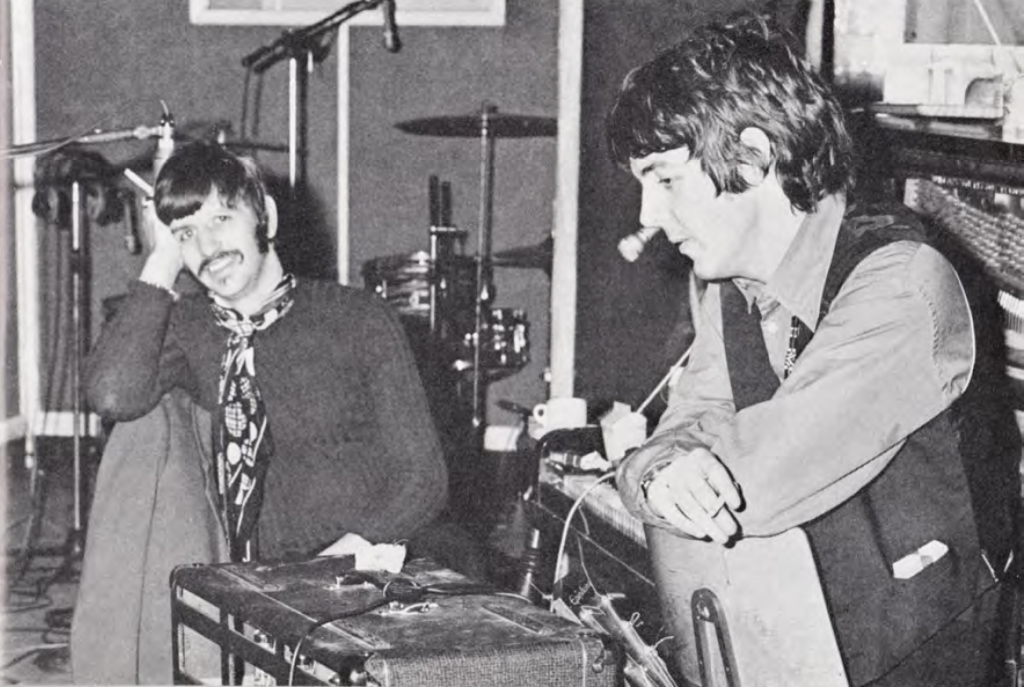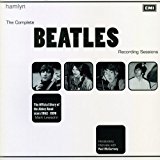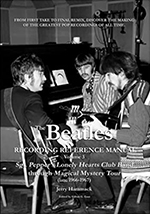- Album Songs recorded during this session officially appear on the All You Need Is Love / Baby You're A Rich Man (UK) 7" Single.
- Studio:
- EMI Studios, Studio Three, Abbey Road
"Our World" satellite broadcast
Spread the love! If you like what you are seeing, share it on social networks and let others know about The Paul McCartney Project.
About
On May 18, 1967, Brian Epstein signed a contract for The Beatles to appear as Britain’s representatives on “Our World”, a live television production that would be broadcast internationally via satellite on June 25. For this momentous occasion, The Beatles chose to record “All You Need Is Love”, a track written by John Lennon, and perform parts of it live.
On June 14, 1967, The Beatles began the recording of “All You Need Is Love” at Olympic Sound Studios. Five days later, they resumed work on the track at EMI Studios, Abbey Road, where they spent an evening session from 7 pm to 1:45 am.
When they got back [from Olympic], we hurriedly organized three sessions at Abbey Road during which we overdubbed backing vocals. Needless to say, miming to a prerecorded track was the safest course of action, but in a fit of bravado, Lennon announced that he was going to do his lead vocal live during the broadcast, which prompted the ever-competitive Paul to respond that if John was going to do that, he would play bass live, too.
It seemed to me to be a foolhardy — though brave — decision. What if one of them sang or played a bad note in front of millions of viewers? But they were supremely confident, and they could not be dissuaded by George Martin, who was adamantly opposed, but as was usual by this point, had no real authority.
In an act of further defiance, John and Paul even talked George Harrison into doing his guitar solo live, which we all knew was a tricky proposition. To my surprise, Harrison gave in without a whole lot of argument; my sense was that he was afraid of being embarrassed in front of his bandmates. Only Ringo was completely safe, for technical reasons: if the drums were played live, there would be too much leakage onto the microphones that were going to be picking up the sound of the orchestra. Ringo nodded his head solemnly when I explained that to him. I couldn’t tell whether he was relieved at being absolved of the responsibility of playing live, or whether he felt left out.
Geoff Emerick – From “Here, There and Everywhere: My Life Recording the Music of The Beatles“, 2006
Their first task was to transfer the previous session’s mono mix onto a new tape reel, which was then followed by overdubs on the three empty tracks.
Onto track two, Ringo Starr added more drums while producer George Martin played the piano and John Lennon contributed a few notes of banjo.
On track three, John recorded his lead vocals with Paul McCartney and George Harrison providing backing vocals. Ringo added some percussion drumming on the back of an acoustic guitar. The last overdub of the session saw John double-track his lead vocals onto track four.
A mixing session was organized on June 21, and work on “All You Need Is Love” continued on June 23.

Last updated on April 1, 2023
Songs recorded
1.
2.
Staff
Musicians on "All You Need Is Love"
- Paul McCartney:
- Backing vocals
- Ringo Starr:
- Drums, Percussion
- John Lennon:
- Banjo, Lead vocals
- George Harrison:
- Backing vocals
- George Martin:
- Piano
Production staff
Going further
The Complete Beatles Recording Sessions • Mark Lewisohn
The definitive guide for every Beatles recording sessions from 1962 to 1970.
We owe a lot to Mark Lewisohn for the creation of those session pages, but you really have to buy this book to get all the details - the number of takes for each song, who contributed what, a description of the context and how each session went, various photographies... And an introductory interview with Paul McCartney!
The third book of this critically - acclaimed series, nominated for the 2019 Association for Recorded Sound Collections (ARSC) award for Excellence In Historical Recorded Sound, "The Beatles Recording Reference Manual: Volume 3: Sgt. Pepper's Lonely Hearts Club Band through Magical Mystery Tour (late 1966-1967)" captures the band's most innovative era in its entirety. From the first take to the final remix, discover the making of the greatest recordings of all time. Through extensive, fully-documented research, these books fill an important gap left by all other Beatles books published to date and provide a unique view into the recordings of the world's most successful pop music act.
If we like to think, in all modesty, that the Paul McCartney Project is the best online ressource for everything Paul McCartney, The Beatles Bible is for sure the definitive online site focused on the Beatles. There are obviously some overlap in terms of content between the two sites, but also some major differences in terms of approach.




Contribute!
Have you spotted an error on the page? Do you want to suggest new content? Or do you simply want to leave a comment ? Please use the form below!